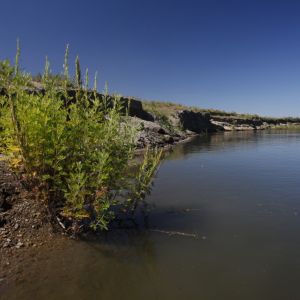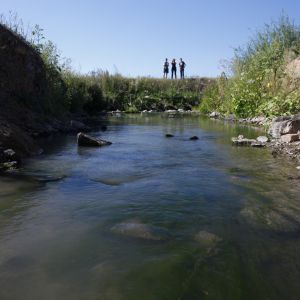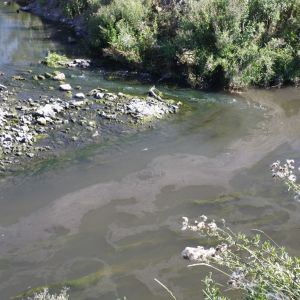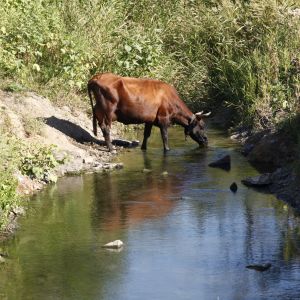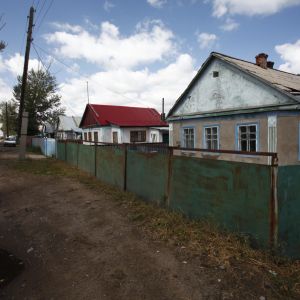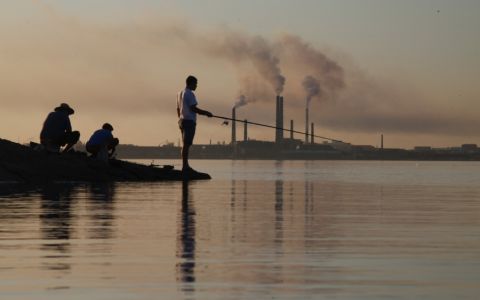Nura is one of the major rivers flowing through the territory of two Provinces – Karaganda and Akmola. Its length is 910 km, the total catchment area – 50 thousand sq. km. It is the only river supplying Lake Tengiz in unique Korgalzhino Nature Preserve that has a capacity to feed 15 million birds, including pink flamingo and other rare species. Nura is also a source of drinking water for the capital Astana.
In 1978, the Kazakhstanis were shocked by the information published in the Journal of Environmental World Health Organization: Nura river is the dirtiest river in the world because of high concentrations of the mercury. It was difficult to accept the view that the steppe creek beloved by fishermen and tourists could be heavily poisoned.
How it all began?
In the middle of the 20th century in Temirtau – an industrial city on the banks of Nura river – a synthetic rubber production factory was found, member of “Karbid” industrial group. Here, production of large quantities of acetaldehyde launched, using mercury salts as the catalyst of the chemical reaction. Due to imperfections of the technology, used mercury was discharged into the gutter streaming to the river. Only in 1977, the wastewater treatment plant was put into operation in the factory, and by 1980 it was reconstructed. By that time, mercury contaminated not only the river, but also production facilities and sewage systems.
In 1997, the production of acetaldehyde has been stopped, but clean-up of mercury-contaminated facilities and wastewater treatment plant was not carried out.
During 47 years of the plant operation, from 150 till 3 thousand tons of the mercury was discharged in the river, according to different estimations. Increased concentration of the mercury was detected in water and soil on the river banks. The length of the most contaminated sites exceeded 30 km. Villages Chkalovo, Kalinin, Samarkand, Gagarin, Andronnikovka, Tegiszhol and Rostovka were among the most affected settlements.
All this time, local inhabitants continued to fish, swim and water their gardens and fields by water from Nura, and grow the vegetables on contaminated land. Time has passed. And everything became forgotten and hidden in shade.
In 2007, Kazakhstanis awake again when they learned about the plan to clean-up Nura. People got worried: Will it cause a new catastrophe? Maybe we should better not touch the mercury reservoir and leave it at the river bed…
People's concerns were not odd
For the clean-up of Nura river and adjacent land from the mercury, Chinese company «CGS Overseas» was invited, and Austrian company «Posch & Partners» to monitor the project – under supervision of the Water Resources Committee of the Ministry of Agriculture. For this purpose, The World Bank has provided a loan to the government of Kazakhstan amounting 39.1 million USD. Another 64.9 million USD were allocated from the state budget. It was supposed that more than 3 million cubic meters of contaminated soil and river sediments will be removed to the special burial site.
Project implementation was followed by many violations right from the beginning. Residents of the villages at river banks were complaining that the trucks with mercury contaminated soil drive between their houses, children swim near operating excavators, and workers are digging contaminated sediments from the river without any protective measures that were beautifully painted in the project.
These facts have been accepted and confirmed, but nobody forced the companies to change the way of their operation. After project completion, no check of the quality of clean-up works has been carried out.
In 2012, Karaganda EcoMuseum has sent the letter to the Water Resources Committee of the Ministry of Agriculture (now part of the Ministry of Environment and Water Resources) requesting the information on mercury content in the river and soil at the river banks after project implementation. Environmentalists received interesting response: "The data are confidential." Thus, nobody knows the real picture of Nura river and surrounding lands contamination by mercury, and its possible impact on public health. Results of costly clean-up project remain a big secret for affected people.
Research confirmed contamination
Czech non-govermental organization Arnika, together with Karaganda EcoMuseum, carried out reserch of the contamination of river sediments and soil in 2013 - 2014. You can read our results here:
Photos




